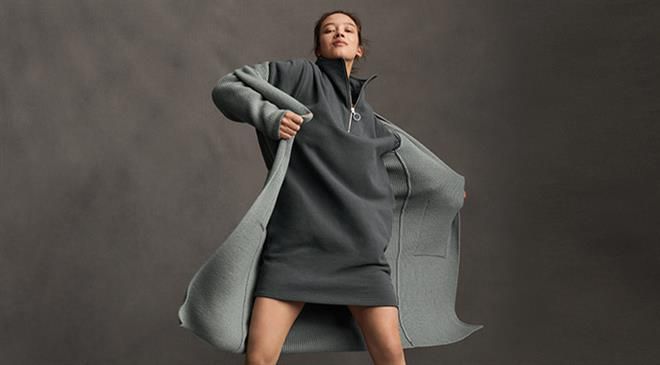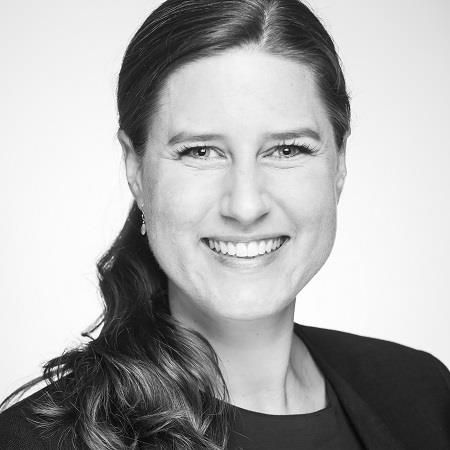Fair and sustainable fashion should become the standard
For the best clothing, Germany-based Hessnatur always looks for the best materials. The company uses high-quality fibres that originate partly from regional cultivation projects or from countries that have particular expertise in the processing of specific materials. Hessnatur’s Chief Sustainability Impact Officer Kristin Heckmann speaks to Fibre2Fashion about sustainable fibres, traceability and slow fashion.
How has the landscape of sustainable fashion evolved in the last 10 years? Do you have any figures you can share?
Hessnatur started as a fair fashion pioneer in 1976. We made organic fashion when ‘organic’ was not yet in fashion. Currently, several sustainable start-ups are showing up on the market. At the same time, many fast fashion brands claim to be sustainable. However, unfortunately there is also a lot of greenwashing. To give you an example, from all the ads and claims one would think that organic cotton is the new normal, but unfortunately the share of organic cotton on the world market is still only around one per cent.
How do you incorporate transparency and traceability of your product offerings?
Fairness and transparency throughout the entire supply chain represent an understanding of values in our Hessnatur fashion collections. We know all our partners (tier 1 and tier 2). With 37 per cent of them, we have been working together for more than ten years. We stay in close contact with them, and we are regularly on site. During COVID-19, we also supported our partners with a Sustainability Fund. However, we also ask a lot from them. We query the fibre origin every season; we query everything up to tier 2/3. Furthermore, our collection entirely fulfils the Hessnatur standard, and we are very proud that according to the Fair Wear Foundation, we are among the top five fairest textile companies worldwide.

How do you deal with textile waste from products being manufactured for the brand?
Our partners are working hard to reduce as much cutting waste as possible, e.g., with computer-helping systems which are optimising the laying of the pattern on the raw fabric. Also, we are collecting the cutting waste from our major partners for our own pre-consumer waste recycling (Bettercycling), where we mix the cutting waste with new ‘virgin’ fibres to get a new yarn which we can use for our products.
In addition, we work with partners who recycle spinning waste into new materials. So far, we have collected 12.5 tons of cutting waste which we have converted into new materials. And we keep going!
What percentage of Hessnatur’s products are made from natural fibres and which ones are made from recycled materials?
At Hessnatur, we specialise in in eco natural fibres, so last financial year 99.6 per cent of our fibres were natural fibres (by weight). In addition, and to work even more resource friendly, we have started our own recycling programme. We recycle our cutting waste into new fibres – we call it BetterRecycling as eco natural fabrics are being brought into a circle.
What are the challenges of being a sustainability first and fair fashion brand?
We aim to make fair fashion more accessible and thus offer an alternative to disposable fashion. We also want to reach a younger target group and get them excited about fair fashion. While degrowth is very important for our sector, fair and eco fashion needs to become the new normal. Until then, we got to grow to matter. That’s why we chose the international fashion online shop About You as our cooperation partner. We are convinced that every fairly and sustainably produced garment makes a difference when it leads to less unsustainable consumption. We make the difference, while sticking to our core values. We create valuable, long-lasting favourite pieces made out of eco natural fibres that are timeless and can be styled within the collections very easily.
What are the limitations in running a slow fashion brand especially with trends and new collections?
The production of a multitude of trend collections at the cheapest prices results in garments that are short-lived and quickly cease to appeal. The mountains of garbage that are caused by this are currently going through the media! And the production is carried out on the back of the workers and the environment. This is not sustainable and no longer corresponds to the level of knowledge and Zeitgeist that we have as a society today. We are resolutely opposed to this!
So being a pioneer for fair, eco and slow fashion we continue to make sustainable clothing, which is durable, high quality, in a timeless design, circular – repairable, recyclable and/or biodegradable – and manufactured under ecological and fair conditions. We strive towards fashion with an entirely positive impact. We would love to see people develop more appreciation for their clothes again.
Do you think the sustainable fashion choices among consumers is growing beyond Europe? Which are some of the countries you see potentially adopting slow fashion?
Sustainability is no longer just a trend, but essential for many fashion companies and customers. Governments and customers are also attaching increasing importance to the fact that clothing is produced fairly and sustainably which means good for our nature, the planet and the people – and they are demanding a corresponding range of products.
According to the Slow Fashion Monitor Study 2021, almost two-thirds of Germans rate sustainability in the apparel sector as relevant, more than one-third of Germans inform themselves about the origin and production conditions of a garment and 60 per cent of Germans practice conscious consumerism to slow down fashion consumption.
Within Europe, Copenhagen (#1), Antwerp (#2) and Dublin (#3) are among the most environmentally friendly cities. The listing was developed with a view to find out the amount of textile waste going to landfill and that which is recycled, total spending on new clothing and search volume for sustainable fashion on the internet.
Which major countries do you source natural fibres from?
The main countries the raw materials are coming from are Turkey (organic cotton) and South America (organic wool). For specialised fibres like linen, Alapca or yak wool, we go for the countries where these are regional e.g., Belgium, Peru and Mongolia.
Do you plan to expand your business and reach to other regions? What are the plans in this regard?
Currently, we focus on the DACH region comprising the three central European countries of Germany, Austria and Switzerland.
What are your long-term sustainability goals? Which new categories do you plan to explore?
We are convinced that the fashion industry must commit itself to the topic of degrowth. That's why we make sustainable fashion that accompanies people for a long time. Not just for one season. And in doing so, we also contribute to less consumption.
We want to be a real alternative. Our goal is clear: fair and sustainable fashion should become the standard.
We will continue to focus on innovations and on becoming nature positive. This year, we have established the Innovations for Tomorrow Award in order to help impact start-ups which have visionary ideas for the fashion industry. The goal is to give them a stage and a network in order to bring their ideas to market.
What major innovation and new fibres are you planning to work with?
Our major innovations are BetterRecycling, Nature Softshell, Mineral Dye and our Denim with Coreva. Our Nature Softshell was rewarded with the German Bundespreis Ecodesign 2021 and the Red Dot Design Award 2022. We will keep working on them and driving innovations even further.
o Our BetterRecycling programme is another contribution to even more sustainability – a true innovation and revolution in manufacturing because we give our valuable cut and yarn remnants a second life. We process remnants of our organic materials into clothing that will accompany you for many years. We have created our own sustainable material cycle system, conserving resources and without harmful chemicals, which means zero waste production.
We have a BetterRecycling programme for denim, merino wool, cashmere, organic cotton, and shoe soles. For our 45th anniversary in 2021, we launched a BetterRecycling collection which consists of fleece, jersey and denim styles.
Our advantage is that we work with 75 per cent mono materials, the rest are mixtures of natural fibres. This facilitates the recycling process.
We are developing a future concept for the post-consumer waste. But when it’s not about our own collections, the recycling of used textiles is an extreme challenge for us not only because of the material mixtures and the otherwise so often used synthetic fibres, which we completely avoid, but also because of the equipment and finishes of other clothing.
o We have developed an innovative Natural Softshell that uses ecologically safe, renewable resources. With our innovative Nature Softshell we created a new category of functional clothing that makes outdoor adventures even more sustainable. Comfort, functionality, everyday suitability, and timeless design were given equal consideration.
o Mineral Dye stands for our natural colour innovation of obtaining colour pigments from minerals. The dyes come in four different shades, all based on natural rocks. Combining textile technology with what nature gives us is a wonderful challenge of the Green Eco Fashion movement, which we love to face again and again. For example, our modern basic sweatshirts with a natural fade-out effect. The breathable, absorbent organic cotton keeps the body pleasantly dry even during activity and movement.
o Our new stretch denim is not only super comfortable, but also completely natural and biodegradable, because it is made from organic cotton and the innovative and sustainable stretch yarn Coreva. Together with our Italian partner Candiani, we have achieved another very important milestone. Coreva is pure nature because the processed natural rubber is obtained from the rubber tree. This makes our new denim fully biodegradable. Jeans that fit perfectly – also for the environment!
The joint innovation Coreva from Hessnatur and Candiani decomposes completely after just six months on the compost without releasing harmful chemicals and microplastics. This is our next step towards circular economy. With our circular process, raw materials become fabrics, and these become garments that can be returned to nature thanks to their biodegradability. This is how we prevent textile waste and negative effects on our planet.


